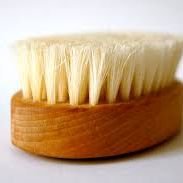Detecting Scoliosis
My mild childhood scoliosis became visible when I was trying on bathing suits for Spring Break when I was a freshman in high school. If you wear baggy clothing as I did at the time, it can be difficult to notice some of the signs of scoliosis.
If you have reason to suspect scoliosis—for example, your child was told that they had a mild curve when they were younger—take a moment to look at their back periodically. If you suspect scoliosis, ask your doctor for an evaluation.
Most public schools no longer provide scoliosis screening.
Early detection offers more treatment options.
Happy 29th Surgiversary!
Wow, 29 years since I had my spinal fusion surgery!
I'm proud of what I've tackled and overcome during this time, and yoga played a huge role in the process, as it will for decades to come.
A couple weeks ago, I watched a webinar by Setting Scoliosis Straight. Doctors from around the world shared their research on Long-Term Follow Up on Adolescent Idiopathic Scoliosis. Most doctors shared research on 10-years post-op, but one doctor from Spain shared a study that his mentor conducted on over 100 patients that had a spinal fusion surgery in the 1980's, so about 30-years prior. You may view this webinar on YouTube now, and I hope to see more long-term studies like this in the future.
Movement is key for EVERY BODY, so we need to find what we enjoy and can maintain.
What do YOU want to know about yoga and scoliosis or spinal fusion?
One of the reasons I decided to return to teaching yoga back in 2019 was to also make a commitment to myself. Sure, I could continue to do what I already knew about yoga and scoliosis, but I would be more committed to continuous learning if I were teaching students. My practice and teaching definitely evolve over time, and that's the best part of keeping that inner spark alive.
There's a saying about the ultimate form of learning is to teach. So that leads me to asking what you'd like to learn from me? No question is too small or too silly! Let me know what you'd like to learn, and I'll do my best to answer.
You know what the teacher used to always say? If you have a question, someone else has the same question, too!
Self-Care
It takes some time to figure out what helps bring you physical relief, and especially how to care for yourself in a way to not enter that zone, or have it happen less frequently.
Movement, breath, sleep, and diet are important factors to focus on when it comes to back pain. However, there's also small actions we can take, such as daily dry brushing, which are essentially free and just take a couple minutes.
About fifteen years ago, a holistic endocrinologist suggested that I try body brushing with a natural bristle brush. I thought I was supposed to almost scrub my skin, which didn't feel good. I never kept up the practice.
When I was pregnant, my stretched skin would feel itchy, and I found a lot of relief from gentle body brushing. Since my pregnancy, I've been dry brushing daily. This practice just felt good to me, and I didn't realize that it had other health benefits.
The dry brushing action stimulates circulation of blood and lymph, which is good for circulation. Dry brushing also stimulates the nerve endings in our skin, which is incredibly important in areas that are not getting the necessary stimulation to stay healthy, such as a painful area we aren't moving. The practice is soothing and may relieve pain for some people.
I do a soft dry brushing before getting in the shower, and prefer my brush with a long handle. I love the habit so much that I also have a smaller brush to take with me when I travel. I may have even brought it camping last summer.
Some added bonuses are the exfoliation for softer skin and a lift in energy.
Try out this self-massage technique and let me know what you think.





